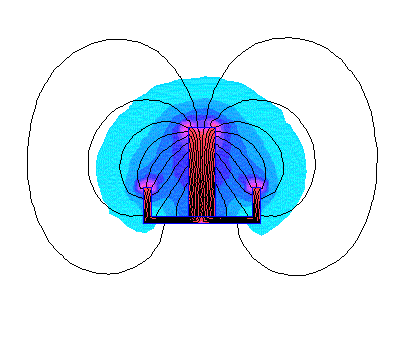So, I was thinking...
In a Jazz Bass single coil pickup, you have small magnetized slugs in the middle of a tall, skinny coil. Would there be any merit in using a tall, skinny coil, with magnetic slugs as poles outside of the coil?
Kinda like so...
First the Jazz SC PU, and then the idea I was throwing around in my noggin.
Given that poles would be spaced apart as they are, and with both having the same polarity, would any field lines actually pass through the coil itself?
In a Jazz Bass single coil pickup, you have small magnetized slugs in the middle of a tall, skinny coil. Would there be any merit in using a tall, skinny coil, with magnetic slugs as poles outside of the coil?
Kinda like so...
First the Jazz SC PU, and then the idea I was throwing around in my noggin.
Given that poles would be spaced apart as they are, and with both having the same polarity, would any field lines actually pass through the coil itself?

Comment